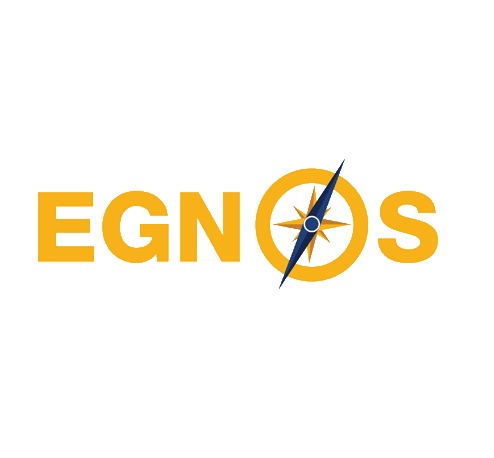EGNOS ensures that satellite navigation signals can be used for safety-critical applications such as guiding aircraft during their approach to airports and other in-flight manoeuvres. The FilGAPP FP7 project is working to develop advanced EGNOS-based navigation procedures that can deliver tangible benefits to the civil air sector across Europe and beyond.
 The overall objective of FilGAPP (‘Filling the gap’ in GNSS Advanced Procedures and Operations), a European Commission funded FP7 project managed by the European GNSS Agency (GSA), is the stimulation, development and demonstration of innovative advanced aircraft operations, procedures and applications based on Global Navigation Satellite Systems (GNSS). GNSS systems are the key, or only, enabler for these types of operation.
The overall objective of FilGAPP (‘Filling the gap’ in GNSS Advanced Procedures and Operations), a European Commission funded FP7 project managed by the European GNSS Agency (GSA), is the stimulation, development and demonstration of innovative advanced aircraft operations, procedures and applications based on Global Navigation Satellite Systems (GNSS). GNSS systems are the key, or only, enabler for these types of operation.
“In particular the project will focus on operations incorporating curved flight segments for aircraft arrivals based on a variety of navigation specifications (Advanced RNP, RNP AR, RNP APCH) and ‘Radius to Fix’ functionality,” says project coordinator Javier Murcia of Spanish company Ineco. “These operations are in high demand from end users, airlines, operators and pilots.”
The project has a special emphasis on the analysis of curved arrivals with final transition to ‘Localizer Performance with Vertical Guidance’ (LPV) approaches that are enabled by the European Geostationary Navigation Overlay Service (EGNOS). The project will also assess precision departure procedures in order to negate problems such as noise impact over populated areas.
Big benefits
 There are numerous benefits that can be realised with the introduction of advanced operations for aircraft operators, airports and air navigation service providers.
There are numerous benefits that can be realised with the introduction of advanced operations for aircraft operators, airports and air navigation service providers.
“Use of EGNOS procedures provides key benefits for aviation which include specific items such as increased accessibility to smaller airport, lower operating costs, fewer delays, less fuel consumption and an associated reduction in CO2 emissions,” claims Javier.
In addition to these general benefits, end users are also demanding new advanced operations to achieve improved operational efficiency, more stabilised final segment approach and a reduction in the number of missed approaches, decongestion of airport terminal area operations, and the ability to introduce new operations on runways that are not equipped with ILS (Instrument Landings System) or other terrestrial-based navigation aids.
As well as a focus on aircraft arrival procedures, the project is also analysing precision departures that allow a reduction of departure climb gradient and offer better cost efficiency, together with general concepts of 4-dimensional navigation procedures. All these are only achievable through the unique services offered by EGNOS or similar satellite-based systems.
“In transit these procedures can reduce flying time and therefore fuel consumption and lead to better service and cost saving for operators,” explains Javier. “Use of EGNOS-enabled systems means reduced need for terrestrial equipment maintenance that leads to cost saving for air navigation service providers.”
The procedures are being verified via flight trials at Pamplona and Valencia airports in Spain on board a CRJ-1000NG aircraft operated by Air Nostrum. Trials are also planned at Egelsbach and Saarbrücken in Germany on board a Hawker 750 airplane operated by Netjets at Egelsbach and a Boeing 737 operated by Air Berlin in Saarbrücken.
Confident course
Javier is confident that the novel procedures being developed by FilGAPP will be implemented across Europe in the near future.
“The EGNOS Safety-of-Life (SoL) service has been operational in Europe since March, 2011,” says Javier. “Now it is time for aviation to take full advantage of it. One of the most important benefits that EGNOS SoL brings to aviation is the possibility to perform LPV approaches almost anywhere.”
Many LPV procedures have been published already in Europe including 29 in France, 3 in Switzerland, 2 in Guernsey, 3 in Italy and 8 10 in Germany. And very soon the first LPV procedures in Spain will be published for Santander Airport.
“We can then say that LPV is now a reality,” states Javier. “For advanced operations, EU Members States have started to work on this issue and, through projects like FilGAPP, are demonstrating that these operations are reliable and can provide tangible benefits. I think we can achieve this milestone in 2014 in Europe.”
Similar procedures can also be developed for aviation in other regions as the performances and coverage of EGNOS is extended to northern Africa and elsewhere.
Media note: This feature can be republished without charge provided the European GNSS Agency (GSA) is acknowledged as the source at the top or the bottom of the story. You must request permission before you use any of the photographs on the site. If you republish, we would be grateful if you could link back to the GSA website.
More information: